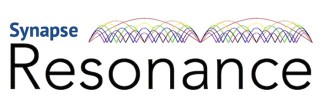We held a Research Question Competition for Resonance 2014 participants asking for research ideas. The results and winning questions are as follows. Congratulations to the winners!
1st Place:
Lauren L., Grade 10, New Haven
Presently, society is facing difficulties with identifying an alternative, sustainable, and cost efficient sources of energy. Enzymatic biofuel cells represent a cost effective alternative, however, further research must be conducted in order to optimize this concept for sustainability and efficiency. This experiment and science fair project is based upon analyzing the effects of different combinations of glucose oxidizing enzymes (glucose oxidase, glucose dehydrogenase, and alcohol dehydrogenase) and oxygen reducing enzymes (laccase, bilirubin oxidase, and ascorbate oxidase) on electron production of an enzymatic fuel cell. Essentially, the purpose of this experiment is to optimize electron transfer at the electrodes using different combinations of glucose catalyzing and oxygen reducing enzymes. Ultimately using these enzymatic biofuel cells can be adapted for in vivo use to power medical devices such as pace makers and hearing aids.
2nd Place:
Norah H., Grade 10, New Haven
I would like to research the potential of using colicins to target and destroy viral and/or bacterial cells using specific targeting mechanisms. Certain microbes have the ability to manufacture colicins, molecules that are fatal to a different strain of microbe but harmless to the original microbial species. I would be interested in exploring the possibilities of genetically manipulating colicins to target cancers or other infected cells while ignoring the healthy cells in our bodies. This would allow new treatments to be developed that would destroy pathogens with no side effects, leaving the patient unharmed. To explore this research question, I would experiment with the surface receptors on the cells of our immune system, trying to create a molecule with surface proteins that fit into the receptors of pathogenic cells, but not into those of our own cells. Another possibility would be to test the introduction of an immunity protein into the cells of our microbiome that would protect them from the colicin. Both these methods are used by colicin-producing cells as a defense against their own colicins.
3rd Place:
Mikhael T., Grade 11, Bridgeport
Would people place more trust in an android if they perceived it to be more “human?” By “human”, I mean that the robot is designed to have physical imperfections that most humans have, like freckles or pimples. Androids are currently designed to fit an ideal image of beauty. This “ideal” human is very different from what most people look like and can even seem alien to the everyday person. Just as people doubt themselves when with someone perceived to be superior, visually flawless androids might evoke the same reaction. Making androids seem more like regular people could make people trust robots more.
4th Place:
Leah V., Grade 10, New Haven
I would like to learn more about how the human blind spot affects humans’ daily lives, and how the eyes have evolved over time in terms of which images they perceive as normal and how the brain reacts to unusual images. By researching the human blind spot and the brain’s instinctive reaction to repair “unusual” images, such as upside-down faces, I will be able to greater understand the complexity and faults of peripheral vision as well as compare the human brain and its instinctive solutions to other organisms’ brains and the processes by which they function. Some experiments that can be performed to test the validity of humans’ peripheral vision and blind spots include a color test: holding up various colored objects to the side of a subject’s head, so that they can only be seen with peripheral vision; and shape test: holding up various shapes in the same scenario and testing if the subject can accurately describe them. I would also be interested in locating the exact spot, relative to the person, of his or her blind spot. This could be done by having a piece of paper with one black dot on it, and performing various trials in which the subject tells whether he can or cannot see the dot (using his peripheral vision). If the subject cannot see the dot, and is known to otherwise have fine eyesight, then the human blind spot will be located.
5th Place:
Dana J., Grade 10, Hamden
Can stem cells prevent autoimmune diseases? Autoimmune diseases, diseases in which the immune system incorrectly detects the body’s own cells as foreign and attacks them, are a very big problem. Approximately 50 million Americans, 20 percent of the population, or one in five people suffer from them. By researching this question, we could possibly find a cure. People who suffer from autoimmune diseases would suffer no more. This would benefit the field of science, as our knowledge of stem cells would be deepened, as well as the large portion of Americans who have autoimmune diseases. There is currently no treatment for autoimmune diseases, so this research has the potential to create a breakthrough in the medical field. In order to answer this question, quantitative and qualitative data would need to be collected through different forms of experimentation. This experimentation would include seeing whether or not treating stem cells with certain drugs causes them to change the immune system into correctly detecting and differentiating foreign and native cells. Another experiment that would be done to answer this question would entail genetically modifying a stem cell and seeing whether or not that affects the cell’s ability to properly differentiate between the cells it should and shouldn’t attack. This question that I have proposed would require lots of experimentation but it is fully viable. The autoimmune disease crisis is a health issue that we need to find a cure for. It is very important that we take action.
